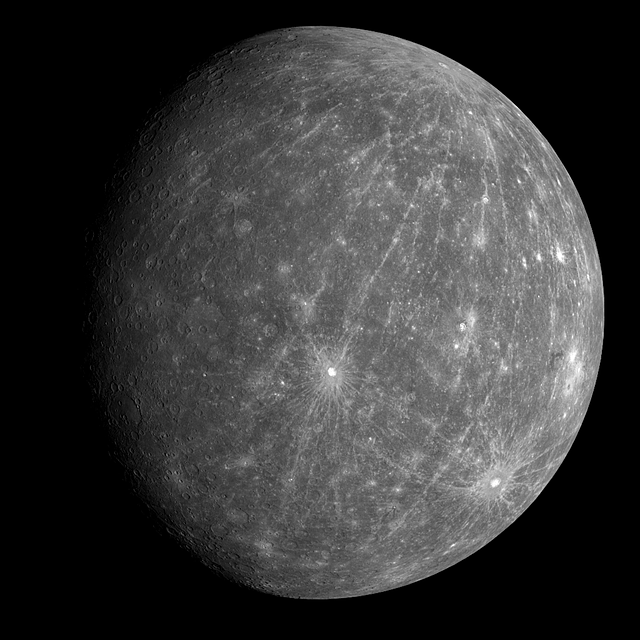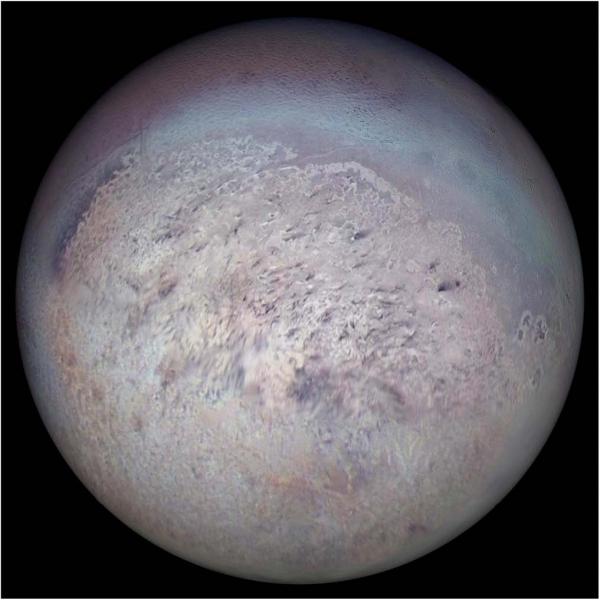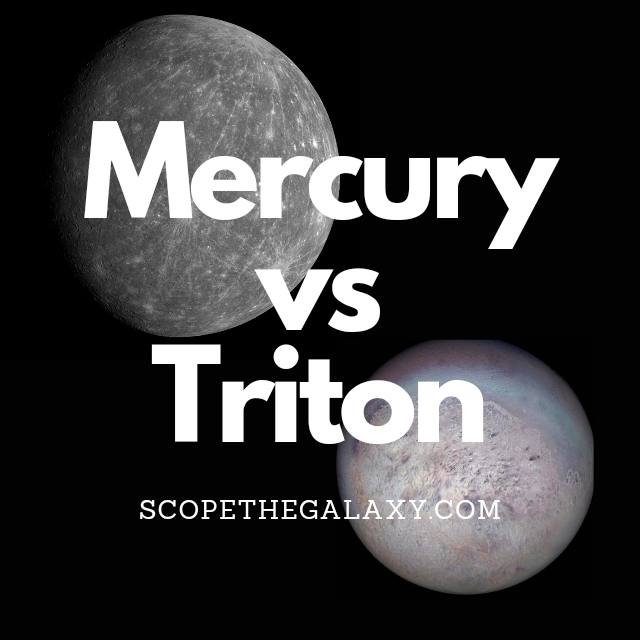*This post may contain affiliate links. This means we may make a commission if you purchase an item using one of our links*
The main differences between Mercury and Triton would be that Mercury is a planet whilst Triton is a natural satellite, Mercury is larger with a diameter of 4,879km whilst Triton has a diameter of 2,706km and Mercury is far hotter with a temperature of 167 degrees Celsius whilst Triton’s average is -235 degrees Celsius.
There are various other differences between the two so, continue reading for a more detailed look a each entity along with their similarities and differences below.
What Is The Planet Mercury?
Table of Contents

Mercury is the planet closest to our Sun and would fall under the terrestrial planet moniker. Out of the 8 main line planets Mercury is also the smallest, coming in at 4,879km.
This planet is known for having its fair share of craters, which is mostly down to its thinner non protective atmosphere that is unable to stop interstellar debris from striking its surface.
Despite its close proximity to the Sun, Mercury is not the hottest planet in our solar system but, it does come in second, just behind Venus. It’s surface temperature is around 430 degrees on the upper end with the average temperature around 167 degrees Celsius whereas its core is far hotter at around 1,600 – 3,000 degrees Celsius.
Due to it close proximity to our local star, Mercury is unable to sustain a moon around its orbit and even has a very unique rotation around the Sun where it has 3:2 orbital resonance with the Sun.
As for how long it takes for the planet to rotate around our yellow dwarf star, its the shortest time period of 88 days for obvious reasons, whilst a single day on the planet takes 58.65 Earth days to complete. Its axial tilt is only 2 degrees to the right, making it amongst the straightest planets in the solar system too.
What Is The Moon Triton?

Triton is the largest moon of Neptune, whose most unusual feature is its retrograde orbit. Triton is the only major moon in our solar system which orbits in the opposite direction of its planet’s rotation.
First discovered on 10th October 1846 (just 17 days after the discovery of its planet, Neptune) by British astronomer William Lassell, “Triton” comes from a merman in Greek myth; a name which perhaps stems from the composition of this faraway moon.
The diameter of Triton is approximately 2,706km, making it a similar size to Earth’s moon. However, we know that its mass is far less than the first estimates suggested because data from Voyager showed that the surface is icy and highly reflective, a less dense composition than the dark surface of our moon.
This icy surface has resulted in ice based natural satellite displaying temperatures in the region of – 235 degrees Celsius.
This lower density stems predominantly from the water-ice interior encasing a denser rock core. Still, the mean density of 2.06 grams per cubic cm remains higher than that of any of Saturn’s or Uranus’ moons. In addition, Triton holds more than 99.5% of the mass of everything that orbits the planet Neptune and its total mass is greater than every smaller satellite in the solar system combined.
Scientists think that Triton may be an object from the Kuiper Belt that Neptune’s gravity captured millions of years ago. This is because it shares many similarities with the dwarf planet Pluto – the best-known world within the Kuiper Belt.
This frozen world is a land of geological oddities with craters and a collection of depressions and ridges known as cantaloupe terrain. The geysers found on this moon shoot plumes of nitrogen as high as 8km high, which creates a thin atmosphere of nitrogen.
In around 3.5 billion years, Triton’s orbit will travel too close to Neptune, and the planet’s gravitational pull will break the moon apart, creating a ring system.
Similarities Between Mercury And Triton
Io and Mercury do have their fair share of similarities, which in this case would include the following:
- Both have a hotter central core.
- Both are a spherical in shape.
- Both are terrestrial planets.
- Both have a very thin atmosphere and a rocky surface.
- Both have no other natural satellites orbiting them.
- Neither have tectonic plates.
Differences Between Mercury And Triton
As for the differences between the two, they include the below:
- Triton orbits Neptune whilst Mercury only orbits the Sun.
- Mercury has a diameter of 4,879km whilst Triton’s diameter is 2,706km.
- Triton has a very thin exosphere composed mostly of nitrogen with small amounts of methane whilst Mercury’s atmosphere is also thin, composed mostly of hydrogen, sodium and oxygen.
- A day on Triton takes 5.877 days whilst a Mercury day is 58.65 days.
- It takes Triton 5.877 days to orbit Neptune and the Sun in 165 years whilst Mercury orbits the Sun in 88 days.
- Mercury’s axial tilt is 2 degrees whilst Triton’s axial tilt is close to 0.
- Triton’s average temperature is around -235 degrees Celsius whilst Mercury’s average temperature is 167 degrees Celsius.
- Mercury’s density is 5.43 g/cm³ whilst Triton’s density is 2.06 g/cm³.
- Mercury’s mass is 3.285 × 10^23 kg whilst Triton’s mass is 2.14 × 10^22 kg.
- Triton’s gravitational strength is 0.779 m/s² whilst Mercury’s is 3.7 m/s².
- Triton is the only moon in our solar system that orbits its planet in a retrograde orbit why Mercury orbits the Sun in a 3:2 orbital resonance
- Triton is tidally locked to Neptune whilst Mercury is not tidally locked to any entity.
- Mercury has a magnetosphere whilst Triton does not.
Summary
Although both Mercury have a few similarities such as their very thin atmosphere, rocky surface and the lack of other moons orbiting them, they still have their fair share of differences.
Whether it be in regards to mass, size, density, gravity, their orbital patterns, length of day and beyond, Mercury and Triton act distinctly from one another.

